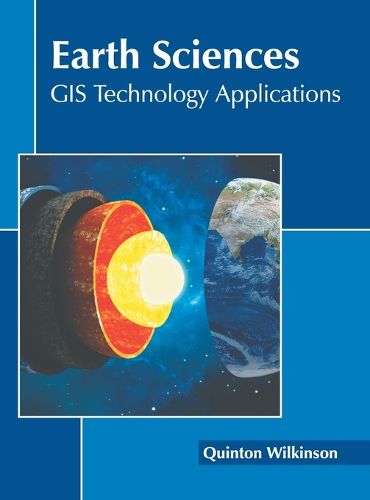Readings Newsletter
Become a Readings Member to make your shopping experience even easier.
Sign in or sign up for free!
You’re not far away from qualifying for FREE standard shipping within Australia
You’ve qualified for FREE standard shipping within Australia
The cart is loading…






Earth sciences refers to the branch of science that deals with the physical, chemical and biological complex constitutions and synergistic linkages of Earth's four spheres, namely, biosphere, hydrosphere, atmosphere and geosphere. A geographic information system (GIS) is a type of computer system that captures, stores, verifies and presents information about different locations and conditions that exist on the surface of the Earth. It facilitates geospatial data analysis, scientific communication, data gathering, collaborative research and visualization. GIS can display a wide range of data on a single map, including plants, streets and buildings. It allows the evaluation and comprehension of relationships and patterns easily. GIS is essential in the field of Earth sciences since it offers an effective way of viewing the world, and serves as a tool for tackling challenging issues such as identifying the drought area, managing oil spills and disaster management. This book elucidates the concepts and innovative models around prospective developments with respect to the applications of geographic information system in Earth sciences. Scientists and students actively engaged in the field of Earth sciences will find it full of crucial and unexplored concepts.
$9.00 standard shipping within Australia
FREE standard shipping within Australia for orders over $100.00
Express & International shipping calculated at checkout
Earth sciences refers to the branch of science that deals with the physical, chemical and biological complex constitutions and synergistic linkages of Earth's four spheres, namely, biosphere, hydrosphere, atmosphere and geosphere. A geographic information system (GIS) is a type of computer system that captures, stores, verifies and presents information about different locations and conditions that exist on the surface of the Earth. It facilitates geospatial data analysis, scientific communication, data gathering, collaborative research and visualization. GIS can display a wide range of data on a single map, including plants, streets and buildings. It allows the evaluation and comprehension of relationships and patterns easily. GIS is essential in the field of Earth sciences since it offers an effective way of viewing the world, and serves as a tool for tackling challenging issues such as identifying the drought area, managing oil spills and disaster management. This book elucidates the concepts and innovative models around prospective developments with respect to the applications of geographic information system in Earth sciences. Scientists and students actively engaged in the field of Earth sciences will find it full of crucial and unexplored concepts.